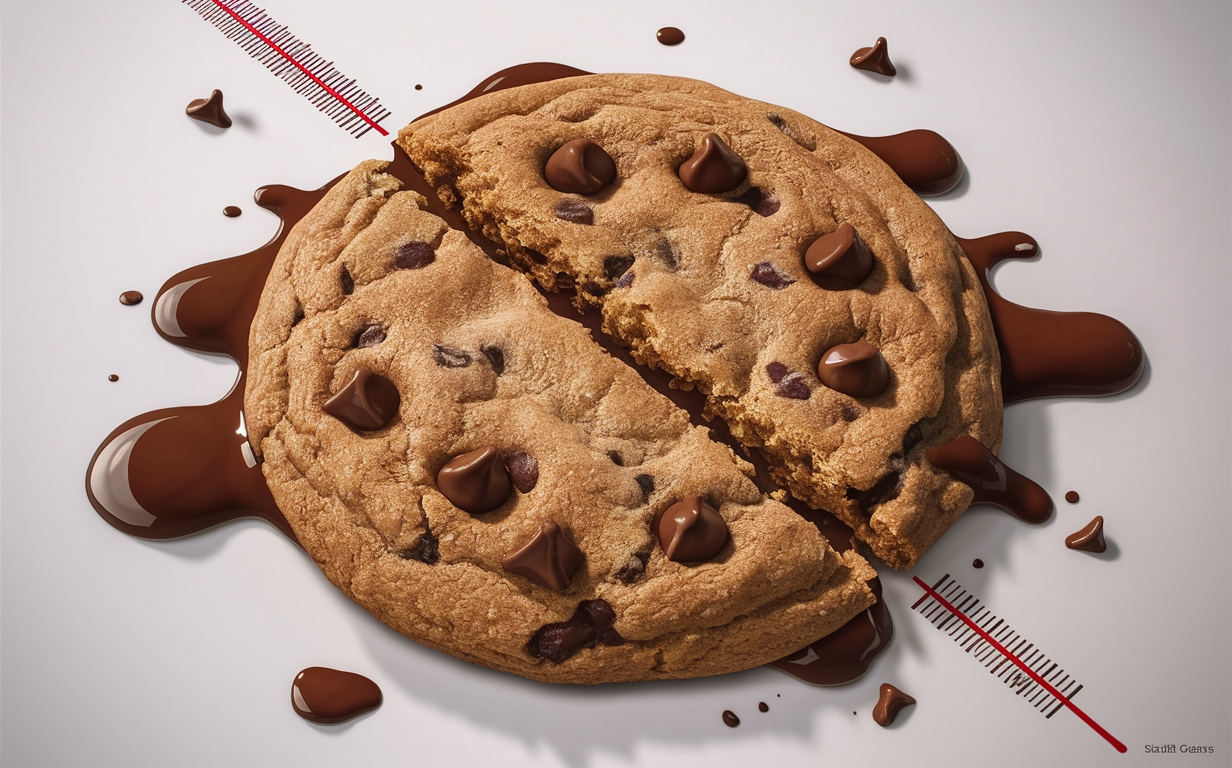If your Nestle chocolate chip cookies are going flat during baking, a number of common issues may be to blame. Flat cookies often result from a combination of ingredient proportions, dough handling, and oven conditions. Here are the most common reasons and how you can fix them to achieve perfectly thick, chewy cookies.
1. Butter Is Too Soft or Melted
The temperature and consistency of the butter play a significant role in the texture of your cookies. If the butter is too soft or melted when you start, the dough can spread too quickly during baking, leading to flat cookies.
Solution:
- Use room-temperature butter that’s soft but still holds its shape when pressed. This helps incorporate air when creaming with sugar, which contributes to a tender cookie. Room temperature means softened but not melted—ideally, the butter should be around 65°F (18°C).
- If your kitchen is particularly warm, consider chilling the dough for 30 minutes to prevent it from spreading too fast.
2. Overmixing the Dough
When you mix the dough too much, especially after adding the flour, it can cause too much gluten to form, leading to flat, tough cookies.
Solution:
- Mix only until combined. After adding the flour mixture, gently fold the ingredients together until just mixed. Overworking the dough encourages excessive gluten development, which makes cookies spread more.
3. Wrong Butter-to-Sugar Ratio
A higher sugar-to-butter ratio can cause cookies to flatten out as they bake. This happens because sugar, particularly granulated sugar, liquefies in the oven and causes the dough to spread.
Solution:
- Stick to the exact measurements provided in the recipe. Too much sugar or butter can cause spreading. You may experiment with using more brown sugar instead of white, as brown sugar contains more moisture and can help cookies hold their shape better.
4. Baking Soda Problems
Using too much baking soda, or not enough, can also affect the cookie’s texture. Baking soda helps the dough rise by releasing carbon dioxide. If there’s too little, the cookies may not rise and could spread too much.
Solution:
- Make sure you measure the baking soda precisely according to the recipe. 1 teaspoon is the standard amount for most chocolate chip cookie recipes.
- Always check the expiration date of your baking soda to ensure it’s still active. You can test its freshness by dropping a little in vinegar. If it fizzes, it’s still good.
5. Warm Baking Sheets
If you reuse baking sheets without cooling them down between batches, the dough can start melting as soon as it hits the hot sheet, leading to flattened cookies.
Solution:
- Always allow baking sheets to cool to room temperature before using them for the next batch. You can cool sheets quickly by running cold water over the back side or using multiple sheets, rotating between them.
6. Not Enough Flour
Flour is essential for giving structure to your cookies. If there isn’t enough flour in the dough, the cookies will spread and become flat. This often happens due to inaccurate measuring.
Solution:
- Make sure to use the spoon-and-level method when measuring flour. Scoop the flour into your measuring cup with a spoon, and level it off with a knife. Avoid packing the flour into the measuring cup, as this can lead to too little flour, causing the cookies to spread too much.
- If you find your cookies consistently go flat, you might want to add an extra 2 tablespoons of flour to the dough.
7. Oven Temperature Issues
An oven that’s too hot will cause the butter to melt too quickly before the cookies have a chance to set, which makes them spread excessively. Conversely, an oven that’s too cool can cause cookies to bake unevenly and spread before they firm up.
Solution:
- Use an oven thermometer to verify your oven’s temperature is accurate. Although the recipe calls for 375°F (190°C), ovens can often be off by as much as 25°F. If the oven is running too hot, lower the temperature slightly to prevent over-spreading.
- You can also try baking your cookies at a lower temperature, such as 350°F (177°C), and baking for a bit longer to give them time to set before the butter melts.
8. Skipping the Dough-Chilling Step
Chilling the cookie dough helps solidify the fats in the dough (primarily butter). When the dough is cold, it takes longer for the fat to melt in the oven, allowing the cookies to bake and rise before spreading.
Solution:
- Chill the dough for at least 30 minutes to 1 hour before baking. This gives the butter time to solidify, which will slow down the spreading process. For an even more pronounced effect, chill the dough for several hours or overnight.
9. Using the Wrong Type of Baking Sheet
Some baking sheets conduct heat more efficiently than others. Thin or dark-colored sheets can cause the cookies to bake unevenly and spread out too much.
Solution:
- Use light-colored, heavy-duty baking sheets. Dark sheets absorb heat more quickly, which can cause cookies to flatten out prematurely. If you only have dark sheets, reduce the baking time slightly or consider lining them with parchment paper.
10. Humidity and Environmental Factors
High humidity can affect your ingredients, especially flour. On humid days, flour tends to absorb more moisture, which can lead to excess spreading in cookies.
Solution:
- If you live in a particularly humid area, consider using a bit more flour to counterbalance the extra moisture in the air.
Final Thoughts:
If your Nestle chocolate chip cookies are consistently coming out flat, it’s often a combination of butter temperature, the amount of flour, and oven conditions. By ensuring proper ingredient measurements, chilling the dough, and baking at the correct temperature, you can prevent cookies from flattening out too much. Baking cookies is part science, part art, and with a few tweaks, you’ll have those perfect, thick, chewy cookies that everyone loves.

